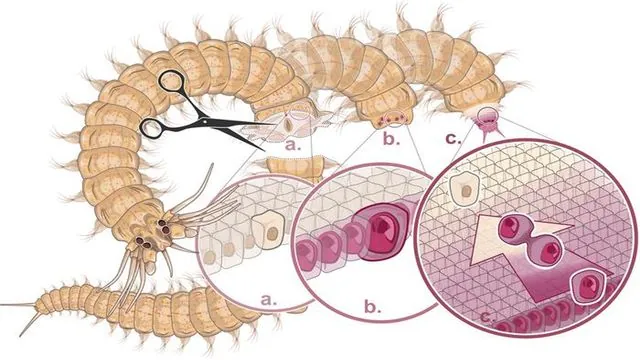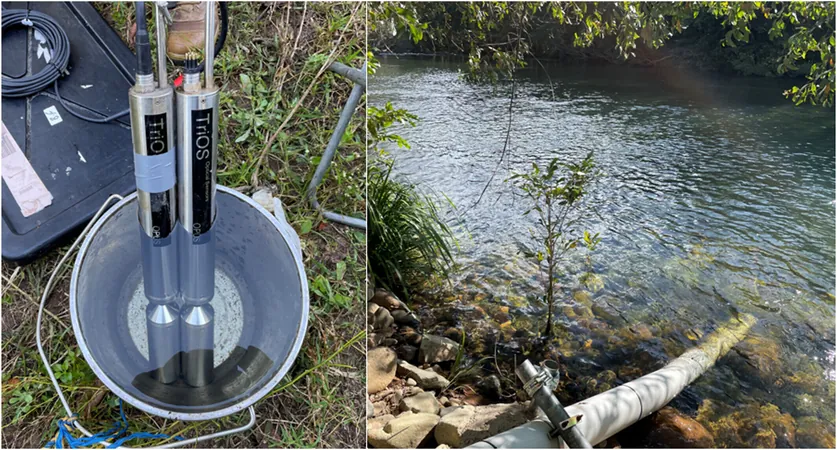
Scientists Unravel the Secrets of Marine Worms’ Incredible Regeneration Powers
2024-11-18
Author: Charlotte
Scientists Unravel the Secrets of Marine Worms’ Incredible Regeneration Powers
In a groundbreaking study, researchers at the Max Perutz Labs in Vienna have made significant strides in understanding how marine worms possess the uncanny ability to regenerate lost body parts. Their findings, recently published in the prestigious journal *Nature Communications*, reveal that these remarkable creatures can restore lost segments by reprogramming their cells into a stem cell-like state.
Key Highlights:
1. **Dedifferentiation Mechanism**: The study emphasizes that marine worms can regenerate by dedifferentiating their specialized cells into a stem cell-like form, which enables the formation of a new growth zone essential for tissue rebuilding.
2. **Single-Cell Analysis**: Utilizing cutting-edge single-cell RNA sequencing, scientists identified unique populations of stem cells responsible for regenerating various tissues, including epidermis, neurons, muscles, and connective tissues, shedding light on the complexity of regeneration.
3. **Comparative Insights**: The research highlights surprising parallels between the regenerative processes in marine worms and modern medical techniques that reprogram human cells. The study points to the significance of transcription factors like Myc and Sox2, which are pivotal in stem cell research and therapy.
While many organisms can regenerate to a degree, marine worms, particularly the species *Platynereis dumerilii*, stand out for their extraordinary capabilities. The investigation into the molecular mechanisms behind such regeneration is not only vital for understanding biology but also holds potential implications for advancements in regenerative medicine.
Research Findings:
When a marine worm loses its growth zone due to injury, its differentiated cells rapidly transition back to a stem cell-like state within hours. This swift dedifferentiation is crucial for re-establishing the lost growth zone, enabling the production of new body segments. According to lead researcher Leonie Adelmann, "This rapid response is key to ensuring that these organisms can effectively regenerate."
Perhaps even more intriguing, the newly formed stem cells exhibit different gene expression profiles compared to their precursor cells, suggesting a sophisticated level of cellular reprogramming. Alexander Stockinger, another lead author, noted, "Factors related to established transcription factors used in regenerative medicine have parallels here, indicating a shared evolutionary strategy in cell reprogramming."
Advanced Techniques:
The researchers employed advanced single-cell transcriptomics, allowing for a granular analysis of cell types and their behavior during regeneration. By combining this approach with fluorescent labelling from collaborating French scientists, they were able to trace the lineage and ultimate fate of the regenerated tissues, uncovering at least two distinct stem cell populations involved in the process.
Conclusion:
Understanding the regeneration capabilities of marine worms could revolutionize our approach to healing and repairing human tissues. As scientists continue to investigate these processes, the prospect of harnessing similar biological strategies for medical applications becomes increasingly promising. The pathway to advancements in tissue regeneration research has been illuminated by these fascinating marine creatures, setting the stage for potential breakthroughs that could one day enhance human regenerative medicine.
Stay tuned for more astonishing discoveries in the realm of cellular biology that could change the face of medical science and our understanding of life itself!









 Brasil (PT)
Brasil (PT)
 Canada (EN)
Canada (EN)
 Chile (ES)
Chile (ES)
 España (ES)
España (ES)
 France (FR)
France (FR)
 Hong Kong (EN)
Hong Kong (EN)
 Italia (IT)
Italia (IT)
 日本 (JA)
日本 (JA)
 Magyarország (HU)
Magyarország (HU)
 Norge (NO)
Norge (NO)
 Polska (PL)
Polska (PL)
 Schweiz (DE)
Schweiz (DE)
 Singapore (EN)
Singapore (EN)
 Sverige (SV)
Sverige (SV)
 Suomi (FI)
Suomi (FI)
 Türkiye (TR)
Türkiye (TR)